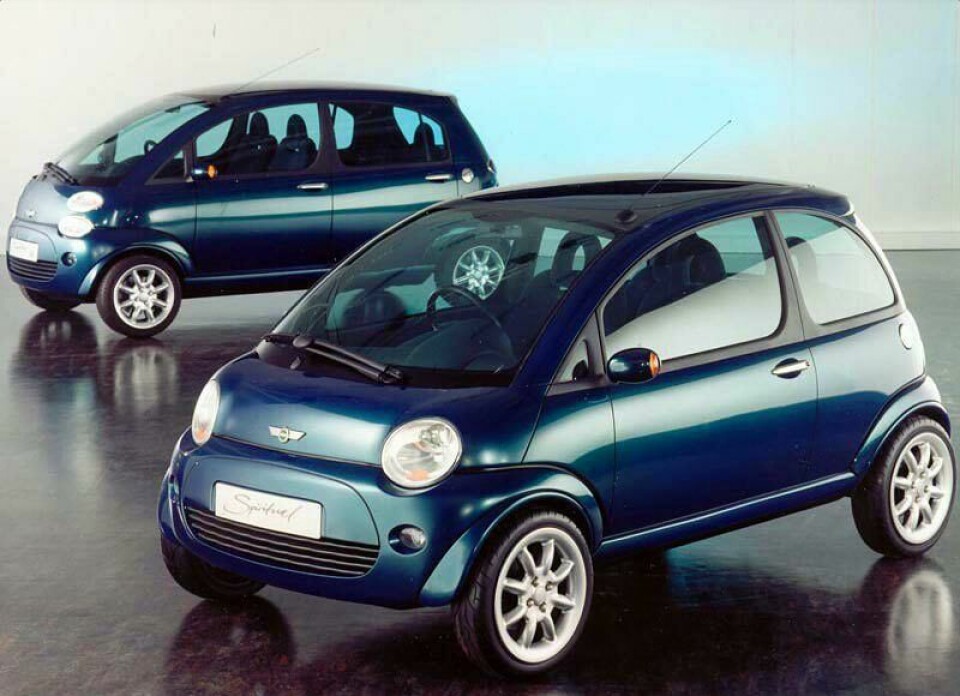
Concept Car of the Week: Rover Mini Spiritual and Spiritual Too (1997)
The alternative future of Mini, borne of a rejected proposal
In 1997 future of the almost 40 year-old Mini was still rather unclear, if no longer internally at Rover and BMW, certainly to scores of ardent fans who worried about the old car’s fate. The events of the year did little to clarify
Earlier in the year Rover had shown the Mini ACV30 concept at the Monte Carlo rally. It was a mid-engined, sporty little coupe with cheekily retro styling that played on the car’s motorsport heritage. While presented as a Rover concept, it was in fact designed by Adrian van Hooydonk at BMW, which at the time owned the British company.

There were growing tensions between the two parties following a day in October 1995 at the Gaydon Heritage Motor Centre where both Rover and BMW presented full-sized proposals of how they imagined the replacement for Alec Issigonis’ classic. It was clear that the two had rather different ideas, with the British contingent concentrating on preserving the ethos of the original by focussing on packaging and an ‘everyman’ image, while BMW envisioned a small, premium and sporty car with an emphasis on heritage styling. The latter won through.

It’s odd then that at the 1997 Geneva motor show two versions of Rover’s rejected proposals were shown to the public, billed as a future vision for the model. The Rover Spiritual and Spiritual Too were boldly forward-thinking, package-led concepts with mid-mounted engines that imagined how Issigonis may have designed them if he was born 40 years later. To further complicate matters however, Rover and BMW had already announced that the real new Mini would stick with a transverse, front-mounted engine, effectively undermining their relevance.
Rover’s design director at the time Geoff Upex was left with the task of explaining that this wasn’t intended to point to the immediate replacement for the Mini, but rather the Mini of 10 year’s time. Of course with the benefit of hindsight we now know that BMW’s plan was so successful it has stuck to it ever since.
None of this detracts from the interest of the Spiritual pair, however, which were extremely advanced for their time. Designed by Oliver de Grice, Spiritual was almost exactly the same length as the original yet with far more interior space thanks to the fact its three-cylinder engine was placed under the rear seat. The thinking at the time was that font-engined small cars were becoming more difficult to package with the rapidly increasing safety legislation that were sweeping through the industry. The Mercedes A-Class, launched at the same event presented what many believed to be the future solution by placing its engine under the floor, with its occupants set higher above.
Indeed the A-Class was the main motivation for the team to create the Spiritual Too, a longer, five-door version of the car that promised BMW 7 Series levels of interior space in a 3500mm long car.

Their designs consciously avoided retro styling cues but instead hinted at their heritage through kids such as the round lamps (four on Spiritual Too), a shutlines from A-pillar to the front wheel that referenced the welding joins of the original and classic Minilite-inspired wheel patterns. Their proportions were however completely alien with single-volume forms and exceptionally short overhangs.

Their interiors were never publicly shown but Autocar reported that the interior mock-ups proved the packaging was a success.
It’s clear now that, while not perhaps the most romantic or pragmatic of decisions, BMW’s vision of ditching the economy car heritage of Mini and instead playing on its emotional ‘lifestyle’ aspects that undoubtedly hold far more appeal on a global level. BMW, it seems, had rather bigger ideas for Mini, literally and figuratively.




